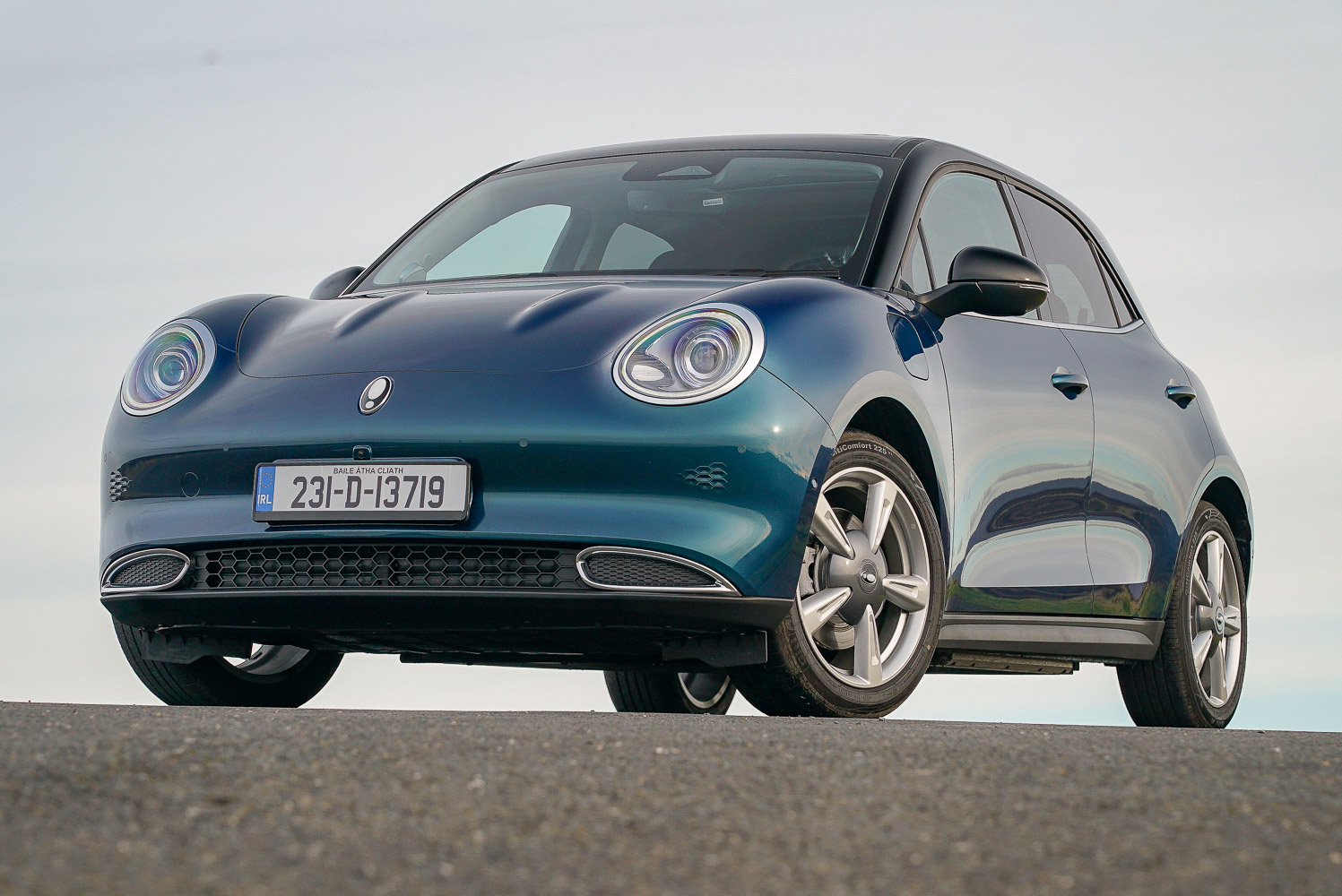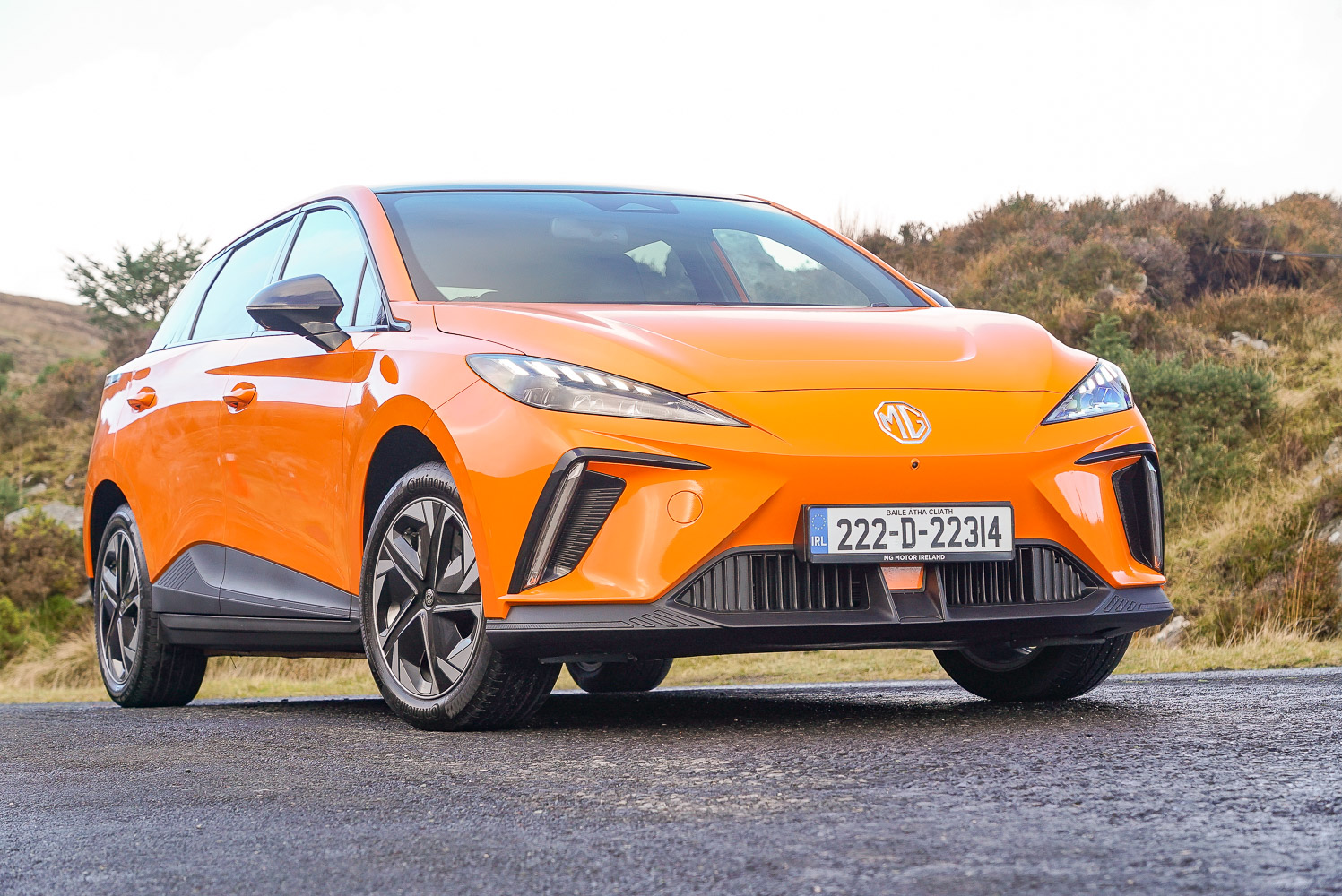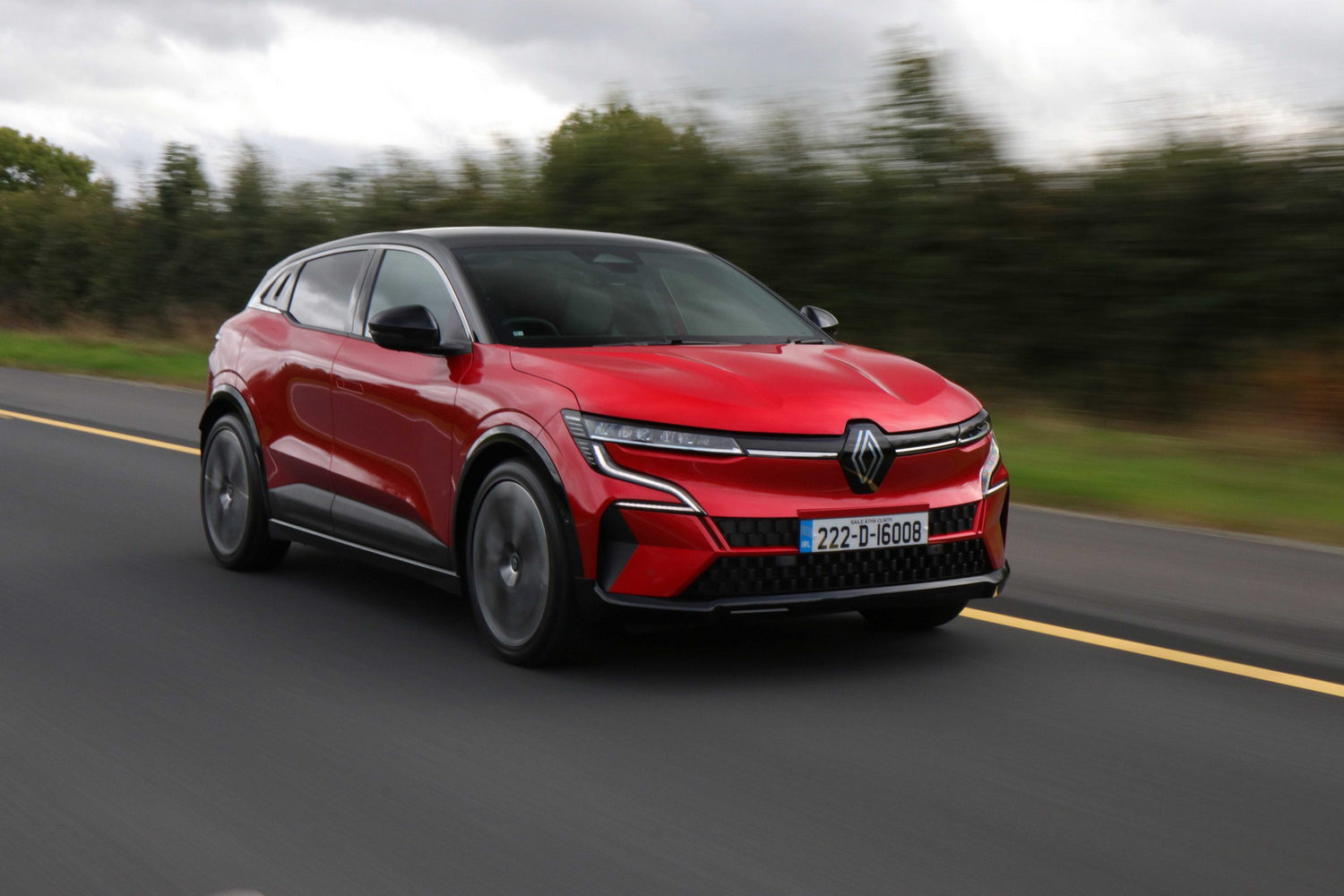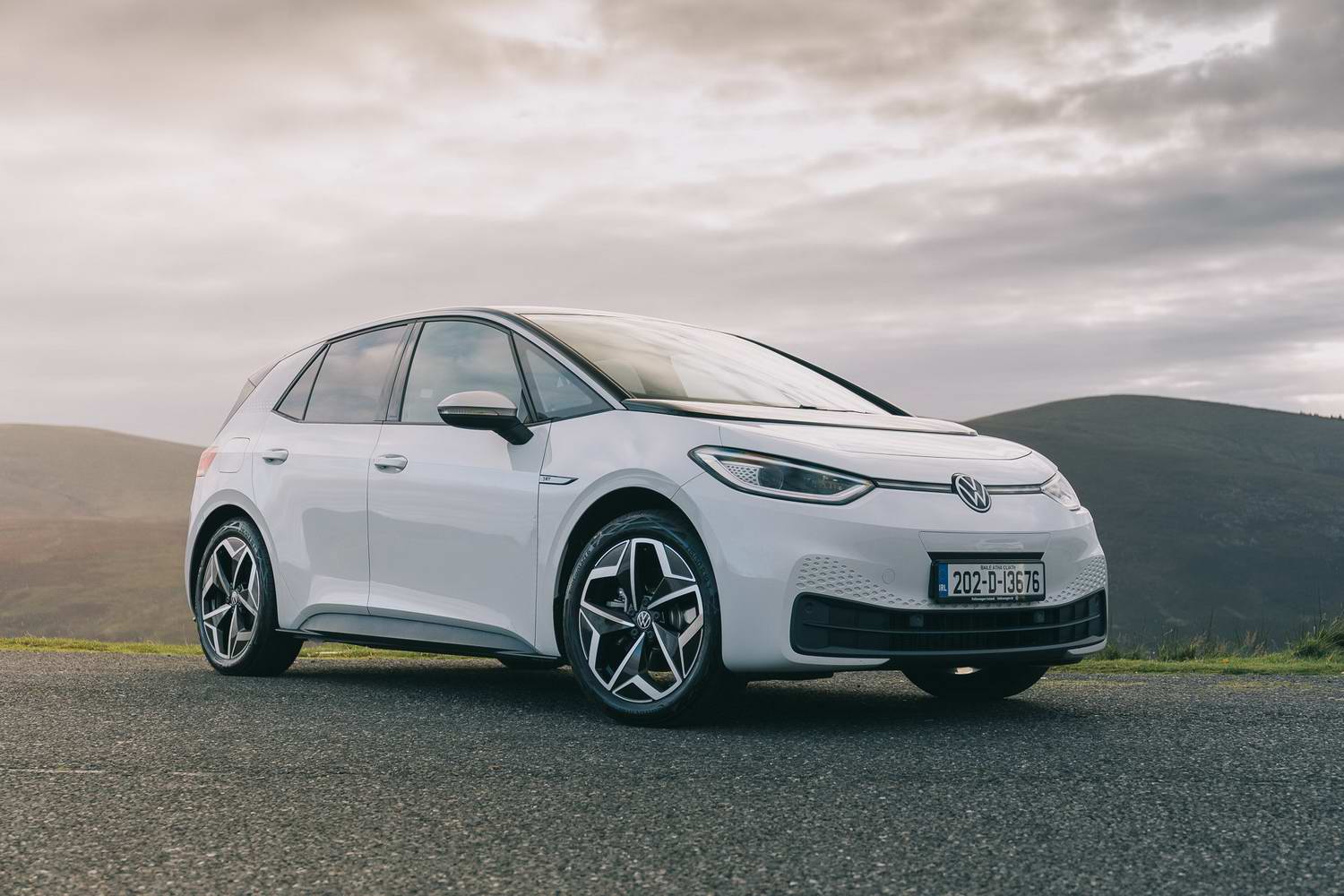Ora Funky Cat overview
We've already driven the Ora Funky Cat, but since this is a new car from a brand-new manufacturer, it's probably worth a recap. It's the product of Chinese manufacturer Great Wall Motor (GWM), which was last seen in Ireland as a commercial vehicle maker with the Steed pick-up truck.
But now GWM is back with electric car brand Ora, a marque that sells models with cat-based names, such as Lightning Cat, Punk Cat and Good Cat. It's a cultural thing, because cats are considered lucky in China. The Good Cat is what the Funky Cat is called in China, but GWM has seen fit to rebrand it for Europe.
Overall the Funky Cat has retro-inspired looks that are in a similar vein to MINI, but it's worth noting that the car is a lot bigger than it looks in pictures. It measures 4.2 metres long and 1.8 metres wide, so it's similar in size, and is a rival, to cars such as the Volkswagen ID.3, MG4 and Cupra Born, rather than the MINI Electric or Honda e.
The Ora Funky Cat model range
There are two versions of the Ora Funky Cat offered in Ireland so far, the 300PRO and 400PRO+, and the differences between them lie with their battery packs. The 300PRO features a 48kWh unit, while the 400PRO+ has a 63kWh item, and they have WLTP ranges of 310km and 420km respectively. Both cars are powered by a 171hp electric motor, which sends power to the front wheels.
There's a charging rate of up to 64kW for the 300PRO, so a 15-80 per cent charge can take just under 43 minutes, while the 400PRO+ can be charged to the same capacity in 48 minutes at a maximum rate of 67kW. From an 11kW source, charge times are 3.2 and 4.3 hours respectively. The charging port on both versions is located on the passenger side front wing.
There's a price difference of €8,000 between the two versions of the Funky Cat and, as well as a larger battery, there's more equipment on the 400PRO+, too. That's not to say that the 300PRO is lacking equipment, though. There are 18-inch alloy wheels - which look deceptively small - rear parking sensors and a reversing camera, as well as 360-degree cameras, keyless entry and starting, electrically adjustable front seats with synthetic leather trim, climate control and a pair of 10.25-inch digital dashboard displays with navigation (well, there will be once the cars receive an update with Irish mapping) and wireless phone charging.
On top of that, the 400PRO+ adds a panoramic opening sunroof, privacy glass, a heated steering wheel, powered tailgate, front parking sensors and park assist, while the front seats are heated, ventilated and have a massage function, too.
Safety equipment is identical on both models, with a full suite of kit on offer. Auto LED headlights are included, plus lane assist and centring, blind-spot detection, adaptive cruise control with traffic jam assist and rear cross-traffic alert. There's also a driver monitor system that warns if it detects tiredness or distraction while you're at the wheel. All of this helped the Funky Cat earn a five-star rating with Euro NCAP, so any doubts about the car's safety can be put to rest.
The Ora Funky Cat interior
We made a note of the Funky Cat's deceptive dimensions earlier, and its larger-than-expected size translates into good interior space, with decent legroom for all passengers and plenty of headroom. The car's size means that it's easy to get in and out of as well.
Cabin quality is pretty good overall, with a reasonable feel to the column stalks and an upmarket feel to the central console, which is helped by the textured finish to the plastics. A covered box under the central armrest half covers the effective wireless phone charger, and the solid-feeling rotary drive selector is located there, too. A pair of cup holders are included, but while they're set low to take taller bottles, they're not especially large. The glovebox is on the slim side, too.
The top-spec 400PRO+ has massage front seats with heating and ventilation, which is quite a luxury on an electric hatchback. Our car was trimmed in quilted synthetic leather finished in a teal colour, while the soft-touch materials on the doors boost the feeling of quality inside.
The twin-screen dashboard works well on the whole. The touchscreen is a little slow to respond in some instances, but there are plenty of features within. You do have to navigate through various sub-menus to get to everything, though. Like Tesla, Ora has included some functions within the touchscreen to keep occupants amused, including a kids mode with various soundtracks on offer. There are 360-degree cameras when parking, too, which offer clear views around the car.
Further back, the rear seats are roomy, but you only get USB sockets and there are no air vents. Space is good, though, while ISOFIX child seat mounts are located on the outer positions. The centre seat has an armrest built in featuring a pair of cup holders.
It's at the back where the Funky Cat is a let-down, because the car's rounded exterior design restricts boot space. The power-operated tailgate opens to reveal a high load lip with a large step to get across, while the 228-litre capacity isn't very impressive. The back seats fold 60:40, but there's a step in the floor when they're flat, too. And while some rivals offer additional storage in their noses, the Funky Cat doesn't have a 'frunk' - pop the bonnet and there's just electrical hardware under there.
The Ora Funky Cat driving experience
From the driver's seat there's decent visibility all-round the Funky Cat and a wide range of seat and wheel adjustment to get comfortable. The steering wheel is large but with a thin rim that feels good to hold. The soft-touch multifunction buttons are of a decent quality, too, while the separate column stalk for the adaptive cruise control means the steering wheel isn't overcrowded with buttons.
There are Normal, Sport and Eco driving modes on offer via a button on the steering wheel, while there's the ability to adjust the strength of the power steering in three steps via a separate control.
Overall refinement is impressive, and the whole Funky Cat driving experience is a pleasant one. It's a smooth car to drive, while the accelerator and brake pedals are well calibrated to deliver consistent responses. The car rarely struggles for traction - even on the Giti-branded tyres of our test car. A wide track helps it feel secure in corners, and there's very little body lean, too. We'd like the steering to be a little faster in its responses, but good bump absorption and a composed chassis help the Funky Cat to feel decent to drive overall.
One-pedal driving is available via a sub-menu in the main touchscreen, but even though we activated it, it seemed to shut off when we were driving faster. In any case, the system is a little jerky to use in stop-start traffic, and we preferred modulating the throttle and brake in a more traditional way. Either way, a return of 18kWh/100km during our time with the car means that official range of around 400km should be achievable with a bit of effort.
Our verdict on the Ora Funky Cat
A new car from a new manufacturer could struggle to make a good impression, but the Ora Funky Cat really grew on us during its time on test - even the looks became more appealing. The cabin feels decent, the interior colours help it to stand out, the standard equipment list (including safety features) is generous and it drives well enough, too. The only real stumbling block for the Funky Cat will be its price: it'll be difficult to convince buyers to move away from established manufacturers at this level. If the price was lower, then it would further grab their attention.
What do the rest of the team think?
I kind of went the other way to Shane, in that the more time I spent with the Funky Cat, the less I liked it. I'm fully on board with the styling - it's like a cross between an original Beetle and K12 Nissan Micra, and there's nothing wrong with that. I also love the cabin, especially with the groovy green dashboard and seat upholstery - so much nicer than the usual grey and black. I wasn't so keen on the performance though. Battery range is fine if you're just driving around town, but it disappears pretty quickly on motorways - 250km is about all you'll get. The touchscreen is also too fiddly to use when on the move, and the voice control and driver monitoring become quite irritating after a while. On the whole, it's a nice car, and rides exceptionally well over bumps, which is a very good thing, but it feels as if a serious software upgrade would improve things considerably.
Neil Briscoe - Editor-at-large



































